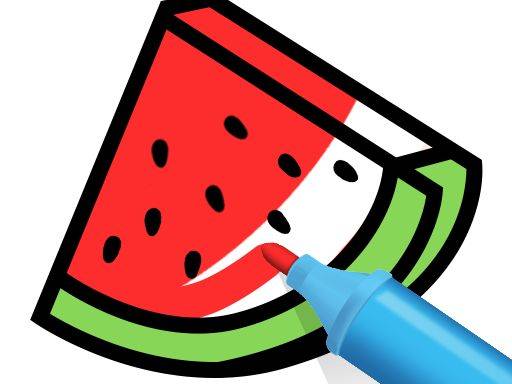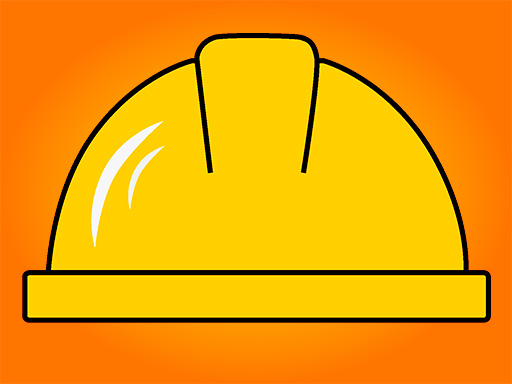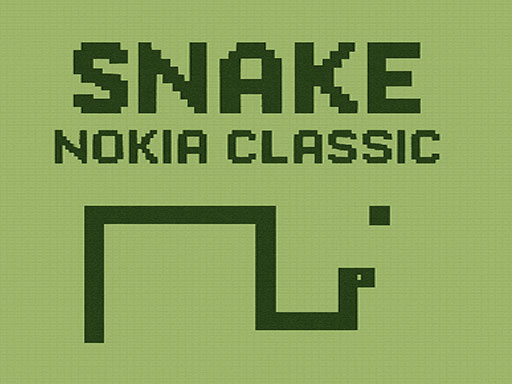Blade Factory 3D
About Blade Factory 3D
You know how sometimes you stumble upon a game you weren't even looking for, something that just pops up and completely blindsides you with how good it is? That’s exactly what happened to me with Blade Factory 3D. Honestly, I’m usually a bit skeptical of games in the hypercasual category. A lot of them feel like fleeting distractions, designed to grab your attention for a minute and then disappear into the digital ether. But there’s something genuinely different about this one, something that just *clicks*. It’s got this incredible tactile satisfaction, this almost meditative quality that just pulls you in and makes you forget about everything else.
I mean, the premise sounds simple enough, right? You’re a blacksmith. You craft swords. But the way they’ve executed it, the way every single step feels so deliberate and meaningful, that’s where the magic is. From the moment you load it up, you’re not just tapping a screen; you’re stepping into this fiery forge, and you can almost feel the heat radiating off the glowing coals. What’s fascinating is how quickly you transition from just a player to feeling like a genuine artisan, a legendary blacksmith, which is exactly what the game promises. And it delivers on that promise in spades.
The brilliant thing about this is that it starts with a little bit of anticipation. You’re not just making a sword for the sake of it; you’re actually matching up against an opponent. It’s a subtle touch, but it immediately gives your crafting a purpose. You see their weapon, maybe it’s a gnarly axe or a gleaming rapier, and then it’s your turn. This isn't some complex RPG where you spend hours grinding for materials. No, this is about the immediate, visceral thrill of creation. You’re presented with a selection of molds, and this is your first real choice. Do you go for a broad, heavy blade, something that looks like it could cleave a tree in half? Or maybe a sleek, elegant design, perfect for a quick, precise strike? The visual feedback is instant, and you can almost feel the weight and balance of the blade forming in your mind as you pick your design. It’s not just a picture; it’s the blueprint for your next masterpiece.
And then, the real fun begins. Once you’ve chosen your mold, you actually start crafting the sword from scratch. This isn't just a single tap-and-wait mechanic. Oh no. You’re actively involved. You’re guiding the molten metal, shaping it, feeling the rhythm of the forge. The screen fills with these vibrant, glowing visuals, and the sounds are just spot on – the clang of metal, the hiss of steam, the roar of the flames. You’re not just watching; you’re *doing*. You’re dragging your finger, or maybe tapping, to hammer the blade into shape. There’s a sweet spot, a perfect rhythm you fall into, where each strike feels impactful, like you’re truly deforming and refining the metal. What’s interesting is how quickly you learn the nuances, how a slightly different tap can affect the outcome. It’s simple, but there’s a surprising amount of tactile satisfaction in getting that perfect form. You can almost feel the tension in your shoulders as you try to get every curve just right.
But that’s just the beginning. The real magic, the part that truly sets this game apart for me, happens when you get to the tempering stage. This is where you take your raw, hammered blade and introduce it to the flames. You’re moving the sword between the intense heat and, I imagine, some kind of cooling bath, though it’s visually represented by this incredible interplay of fire and light. There’s a delicate balance here; you need to heat it just right, not too much, not too little, to give it that perfect temper. You’re watching the color of the blade change, from dull grey to a vibrant, almost molten orange, then back again. It’s a dance, a precise ballet between heat and cool, and when you nail it, there’s this incredibly satisfying visual and auditory cue that just screams "perfection!" You feel that rush, that little surge of adrenaline, knowing you’ve just imbued your creation with strength and resilience. It’s not just a stat boost; it feels like you’ve genuinely put a piece of your blacksmith soul into that blade.
And then, the finishing touches. This is where you get into the serious polishing. You’re not just rubbing a rag over it; you’re working the surface, refining it, making it gleam. The game does a fantastic job of visually representing this, with sparks flying and the blade slowly transforming from a raw, forged piece into a polished, deadly weapon. This stage is all about boosting your damage value, and honestly, seeing that number climb as you polish away is incredibly addictive. There’s a direct correlation between your effort and the numerical reward, and that’s a powerful motivator. You want to see that number as high as possible, because you know what’s coming next.
The culmination of all your hard work, the moment of truth, is when your newly crafted sword is used to test itself against your opponent. It’s not a complex combat system, which is perfect for the hypercasual nature of the game. It’s quick, impactful, and provides immediate feedback. You see your sword clash, you see the damage numbers fly, and you either triumph or you learn. And even when you don't win, there’s no real frustration, just a sense of "okay, next time I'll pick a different mold, or temper it better, or polish it even more." It creates this incredibly satisfying loop where every loss is a lesson, and every victory is a testament to your growing skill as a blacksmith.
What I love about games like this is how they manage to distill a complex concept down to its most engaging elements. Blade Factory 3D isn't trying to be a full-blown RPG with skill trees and crafting recipes that take hours to master. It’s about the pure, unadulterated joy of creation and the immediate gratification of seeing your work in action. There’s something magical about taking raw materials and transforming them into something powerful, something beautiful, and then seeing it perform. It’s that fundamental human desire to build, to create, that this game taps into so perfectly.
In my experience, the best moments in gaming often come from these simple, repetitive actions that lead to a flow state. And that’s exactly what Blade Factory 3D does. You start playing, thinking you’ll just make one or two swords, and suddenly an hour has gone by. You’re just in the zone, hammering, tempering, polishing, completely absorbed in the rhythm of the forge. It’s almost therapeutic. You’ll find yourself humming along to the subtle background music, anticipating the next clang of the hammer, the next burst of flame. The sensory feedback is so well-tuned that it just draws you deeper and deeper into the experience.
This makes me wonder about the genius behind hypercasual games that manage to transcend their category. It’s not just about simple mechanics; it’s about making those simple mechanics *feel* good. It’s about the haptic feedback, the satisfying sounds, the clear visual progression. Blade Factory 3D nails all of that. It’s got that addictive quality that makes you want to play just one more round, craft just one more sword, see if you can beat your last damage record. It’s the kind of game you pick up for five minutes, and then realize you’ve been playing for forty.
Honestly, if you’re looking for a game that offers a genuine sense of accomplishment, that lets you flex your creative muscles in a simple yet deeply satisfying way, you’ve got to give Blade Factory 3D a try. It’s more than just a casual game; it’s an experience. It’s that feeling of shaping something from nothing, imbuing it with power, and then watching it prove its worth. It’s the kind of discovery that reminds me why I love gaming so much – those unexpected gems that just perfectly capture a feeling, a fantasy, and make it accessible to everyone. You can almost feel the heat, hear the clang, and sense the anticipation of your next masterpiece taking shape. It’s just… incredible.
I mean, the premise sounds simple enough, right? You’re a blacksmith. You craft swords. But the way they’ve executed it, the way every single step feels so deliberate and meaningful, that’s where the magic is. From the moment you load it up, you’re not just tapping a screen; you’re stepping into this fiery forge, and you can almost feel the heat radiating off the glowing coals. What’s fascinating is how quickly you transition from just a player to feeling like a genuine artisan, a legendary blacksmith, which is exactly what the game promises. And it delivers on that promise in spades.
The brilliant thing about this is that it starts with a little bit of anticipation. You’re not just making a sword for the sake of it; you’re actually matching up against an opponent. It’s a subtle touch, but it immediately gives your crafting a purpose. You see their weapon, maybe it’s a gnarly axe or a gleaming rapier, and then it’s your turn. This isn't some complex RPG where you spend hours grinding for materials. No, this is about the immediate, visceral thrill of creation. You’re presented with a selection of molds, and this is your first real choice. Do you go for a broad, heavy blade, something that looks like it could cleave a tree in half? Or maybe a sleek, elegant design, perfect for a quick, precise strike? The visual feedback is instant, and you can almost feel the weight and balance of the blade forming in your mind as you pick your design. It’s not just a picture; it’s the blueprint for your next masterpiece.
And then, the real fun begins. Once you’ve chosen your mold, you actually start crafting the sword from scratch. This isn't just a single tap-and-wait mechanic. Oh no. You’re actively involved. You’re guiding the molten metal, shaping it, feeling the rhythm of the forge. The screen fills with these vibrant, glowing visuals, and the sounds are just spot on – the clang of metal, the hiss of steam, the roar of the flames. You’re not just watching; you’re *doing*. You’re dragging your finger, or maybe tapping, to hammer the blade into shape. There’s a sweet spot, a perfect rhythm you fall into, where each strike feels impactful, like you’re truly deforming and refining the metal. What’s interesting is how quickly you learn the nuances, how a slightly different tap can affect the outcome. It’s simple, but there’s a surprising amount of tactile satisfaction in getting that perfect form. You can almost feel the tension in your shoulders as you try to get every curve just right.
But that’s just the beginning. The real magic, the part that truly sets this game apart for me, happens when you get to the tempering stage. This is where you take your raw, hammered blade and introduce it to the flames. You’re moving the sword between the intense heat and, I imagine, some kind of cooling bath, though it’s visually represented by this incredible interplay of fire and light. There’s a delicate balance here; you need to heat it just right, not too much, not too little, to give it that perfect temper. You’re watching the color of the blade change, from dull grey to a vibrant, almost molten orange, then back again. It’s a dance, a precise ballet between heat and cool, and when you nail it, there’s this incredibly satisfying visual and auditory cue that just screams "perfection!" You feel that rush, that little surge of adrenaline, knowing you’ve just imbued your creation with strength and resilience. It’s not just a stat boost; it feels like you’ve genuinely put a piece of your blacksmith soul into that blade.
And then, the finishing touches. This is where you get into the serious polishing. You’re not just rubbing a rag over it; you’re working the surface, refining it, making it gleam. The game does a fantastic job of visually representing this, with sparks flying and the blade slowly transforming from a raw, forged piece into a polished, deadly weapon. This stage is all about boosting your damage value, and honestly, seeing that number climb as you polish away is incredibly addictive. There’s a direct correlation between your effort and the numerical reward, and that’s a powerful motivator. You want to see that number as high as possible, because you know what’s coming next.
The culmination of all your hard work, the moment of truth, is when your newly crafted sword is used to test itself against your opponent. It’s not a complex combat system, which is perfect for the hypercasual nature of the game. It’s quick, impactful, and provides immediate feedback. You see your sword clash, you see the damage numbers fly, and you either triumph or you learn. And even when you don't win, there’s no real frustration, just a sense of "okay, next time I'll pick a different mold, or temper it better, or polish it even more." It creates this incredibly satisfying loop where every loss is a lesson, and every victory is a testament to your growing skill as a blacksmith.
What I love about games like this is how they manage to distill a complex concept down to its most engaging elements. Blade Factory 3D isn't trying to be a full-blown RPG with skill trees and crafting recipes that take hours to master. It’s about the pure, unadulterated joy of creation and the immediate gratification of seeing your work in action. There’s something magical about taking raw materials and transforming them into something powerful, something beautiful, and then seeing it perform. It’s that fundamental human desire to build, to create, that this game taps into so perfectly.
In my experience, the best moments in gaming often come from these simple, repetitive actions that lead to a flow state. And that’s exactly what Blade Factory 3D does. You start playing, thinking you’ll just make one or two swords, and suddenly an hour has gone by. You’re just in the zone, hammering, tempering, polishing, completely absorbed in the rhythm of the forge. It’s almost therapeutic. You’ll find yourself humming along to the subtle background music, anticipating the next clang of the hammer, the next burst of flame. The sensory feedback is so well-tuned that it just draws you deeper and deeper into the experience.
This makes me wonder about the genius behind hypercasual games that manage to transcend their category. It’s not just about simple mechanics; it’s about making those simple mechanics *feel* good. It’s about the haptic feedback, the satisfying sounds, the clear visual progression. Blade Factory 3D nails all of that. It’s got that addictive quality that makes you want to play just one more round, craft just one more sword, see if you can beat your last damage record. It’s the kind of game you pick up for five minutes, and then realize you’ve been playing for forty.
Honestly, if you’re looking for a game that offers a genuine sense of accomplishment, that lets you flex your creative muscles in a simple yet deeply satisfying way, you’ve got to give Blade Factory 3D a try. It’s more than just a casual game; it’s an experience. It’s that feeling of shaping something from nothing, imbuing it with power, and then watching it prove its worth. It’s the kind of discovery that reminds me why I love gaming so much – those unexpected gems that just perfectly capture a feeling, a fantasy, and make it accessible to everyone. You can almost feel the heat, hear the clang, and sense the anticipation of your next masterpiece taking shape. It’s just… incredible.
Enjoy playing Blade Factory 3D online for free on 2mca Games. This Arcade game offers amazing gameplay and stunning graphics. No downloads required, play directly in your browser!
How to Play
Mouse click or tap to play





Comments
This game is awesome! I love the graphics and gameplay.
One of the best games I've played recently. Highly recommended!